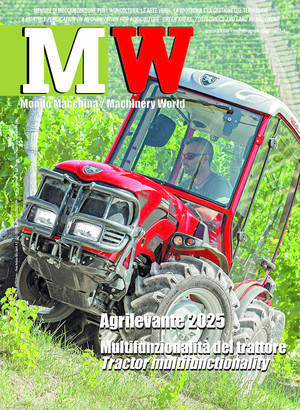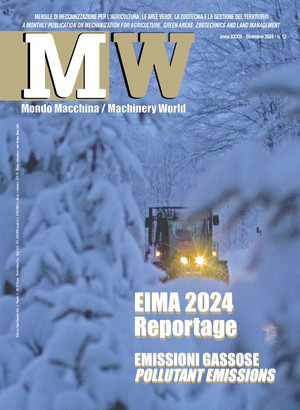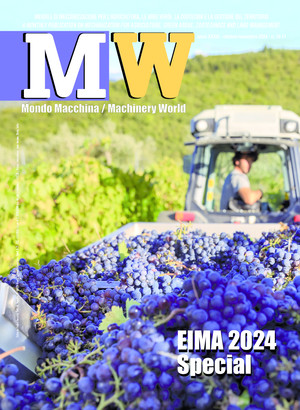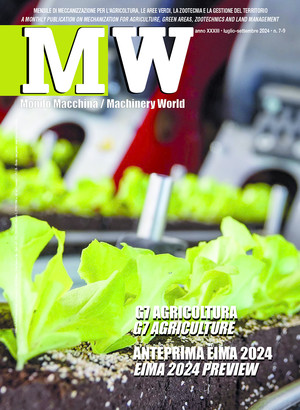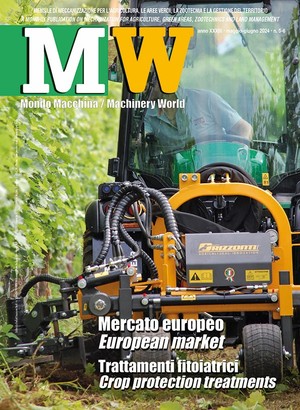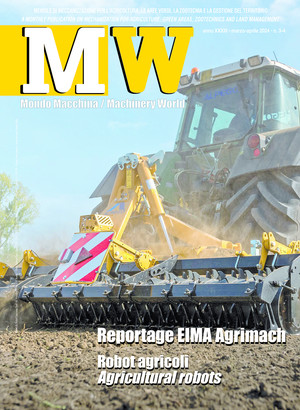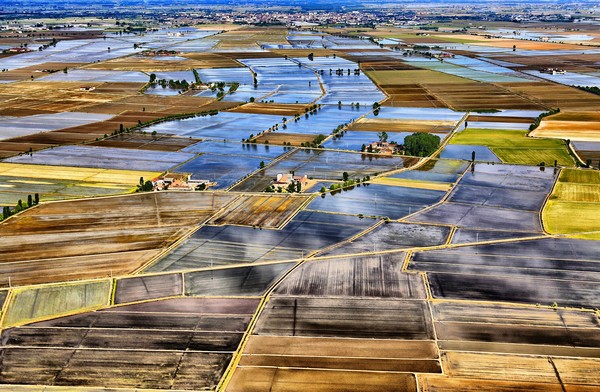
Sustainability in rice growing: submersion and fertilization
The introduction of an additional dry period (to reduce methane emissions) and variable-rate fertilization not only reduces the environmental impact but also allows for a more efficient use of production factors
Rice cultivation has always been and still is a sector of excellence in the Italian agri-food industry; after all, Italy is the European leader in the production of rice for risotto. Besides, also because of the peculiar growing conditions, the environmental impact of rice cultivation is not negligible.
In fact, the practice of traditional continuous submersion creates anoxic conditions in the soil, favoring the anaerobic fermentation of organic matter and the consequent emission of methane, which can represent a significant share (from 40 to 55%) of the environmental impact of rice production, in terms of carbon footprint.
The use of synthetic nitrogen fertilizers is a widespread practice in many rice-growing areas where, generally, livestock farming is limited and, therefore, the consequent availability of waste products. The production of these fertilizers is energy-intensive, and their application can lead to various environmental problems, including the leaching of nitrates, the formation of nitrous oxide (another greenhouse gas) and the volatilization of ammonia. These emissions contribute to phenomena such as soil acidification, eutrophication of fresh and seawater, and the formation of atmospheric particulate matter.
Furthermore, excessive availability of nitrogen can increase the susceptibility of crops to fungal pathogens. The main strategies for mitigating these impacts include the adoption of precision agriculture (PA) solutions, in particular through variable rate (VR) nitrogen fertilization, as well as optimization of submersion with alternative water management, including additional drying at specific times during the crop cycle, such as an additional dry period halfway through the crop cycle. The growing attention from all the players in the supply chain has led to the development of research projects and experiments that have provided interesting results. This article presents some of the results of the RiceSmart project (Digital technologies to increase the sustainability and competitiveness of Lombardy rice farms) funded by the Lombardy Region. The proposal envisages new digital technologies for the sustainable management of nitrogen fertilizers, weed control products and waterlogging management and meets the needs highlighted by the new CAP 2023-2027, as it offers support to farms to improve their environmental performance and competitiveness, especially through a more efficient use of resources. More specifically, using a smartphone application, we experimented with variable rate fertilization support, as well as the effectiveness of introducing additional dry matter during sprouting.
Field trials. In 2023 and 2024, specific tests were carried out in 4 experimental fields for each company examined in Lomellina, characterized as follows: in the first, the cultivation technique used was the classic one (BASE); in the second, additional drying was introduced halfway through the emergence phase (with re-submersion by the start of the barrel) (A+); in the third, fertilization at a variable rate (VR) was carried out; in the fourth, additional drying and fertilization at a variable rate (A-VR) were combined.
The additional dryness during the sprouting phase allows the anaerobic conditions of the soil to be interrupted, thus reducing methane emissions and, at the same time, reducing the absorption of arsenic in the grain without causing a significant increase in cadmium content. Moreover, from an organizational point of view, it does not require any changes to the company's machinery.
Variable rate fertilization, on the one hand, allows for more efficient use of fertilizers, which translates into a reduction of nitrogenous compound emissions into the environment and, therefore, of water eutrophication and soil acidification but, on the other hand, it requires the presence of specific equipment in the company's machinery. data was collected on the production factors distributed or consumed (seeds, fertilizers, pesticides, fuels) and on the use of operating machines (working times, operating machine-tractor combinations, useful life of equipment). Furthermore, at the end of the crop cycle, the yield in the field (tons/ha of paddy rice), the humidity of the paddy rice and the yield after subsequent processing were measured.
Life Cycle Assessment. The environmental assessment was carried out using Life Cycle Assessment in accordance with ISO standards 14040 and 14044. The functional unit, i.e., the unit for which the various impacts were calculated, is one ton of paddy rice at commercial moisture content (14%). The study considered all the processes carried out with the production factors used (seeds, fertilizers, agricultural machinery, etc.) up to the harvesting and drying of the product.
For the two varieties under consideration, it is possible to identify the solution with the lowest impact on global warming. In absolute terms and concerning the impact on climate change (carbon footprint), for PVL024, the impact varies from 1033 kg of CO2 eq/t in the case of the Base scenario to 575 kg of CO2 eq/t with additional dryness, 859 kg of CO2 eq/t in the case of variable rate fertilization and 650 kg of CO2 eq/t in the case where the two mitigation strategies are combined. Similarly, for Selenio, the impact varies from a maximum of 1195 kg of CO2 eq/t in the BASE scenario to a minimum of 682 kg of CO2 eq/t in the case of the cultivation technique that includes additional drying. In both cases, the solution with the lowest impact is the one that provides for additional drying, followed by the one that combines this practice with variable rate fertilization, and then the cultivation technique that is characterized by variable rate fertilization.
For the Selenio variety, the solution that combines both mitigation strategies has a greater impact than the BASIC scenario due to a drop in crop productivity.
However, this reduction does not appear to be directly linked to the change in cultivation practice; it depends on other factors such as a case of bud rot in this specific case.
As for the other environmental impacts evaluated (e.g., acidification, eutrophication of water and consumption of mineral and fossil resources), the results show lower variations than those found for the carbon footprint.
For these impacts, the benefits are linked to two factors: a more efficient use of nitrogen, which leads to a reduction in losses due to leaching and volatilization, and a reduction in the doses applied.
It is, however, interesting to note that for acidification and eutrophication, especially in the case of Selenio, the solutions that achieve the best results are those that involve variable rate fertilization supported by smartphone applications.
Therefore, although the variation in field productivity can cancel out the benefits of the two solutions investigated, for the same production, the adoption of variable rate fertilization and the introduction of additional dryness are confirmed as solutions capable of improving cultivation's sustainability.


